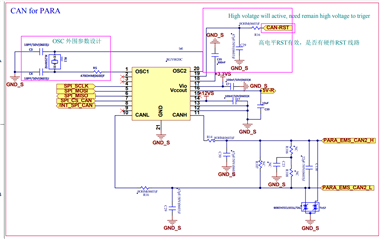Tool/software:
Please help to review the schematic and below some question. Thanks
1) Are the peripheral circuits and parameters of OSC required for R5? With a 25MHZ crystal oscillator, what is the capacitance value? (20MHZ crystal oscillator corresponds to 1MHZ CAN BUS);
2) Do we have discrete RST circuit to share? Since we don't want to use the MCU.
3) SPI interface signals are directly entered into the control module. Do you have recommend guideline for those parameter requirements, such as current limiting resistors, filter capacitors, etc. ~
4) Is it recommended to add the resistance and capacitance between the CAN line? If so, what are the recommended parameters?
BR,
Gary




